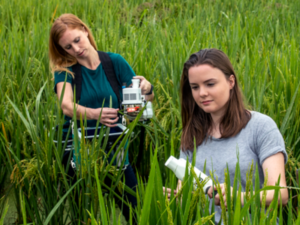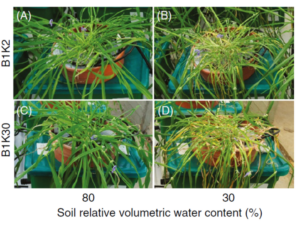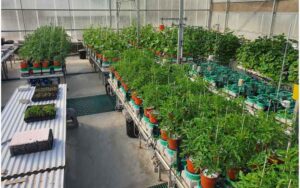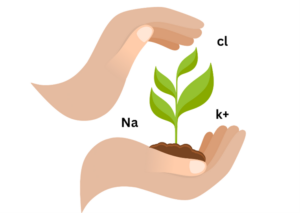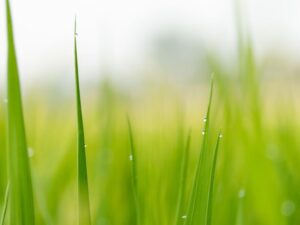Plant physiology phenotyping is the study of plant structure, function, and metabolism to identify the underlying mechanisms that contribute to plant growth, development, and response to environmental stress such as drought, flood and tc. The process of physiology phenotyping involves the use of various techniques and tools, such as our fully automated PlantArray system that includes physiological measurements, and biochemical assays, to characterize the complex interactions between plants and the environment.
What is Physiology Phenotyping?
Physiology phenotyping plays a critical role in advancing the field of agriculture towards more efficient and sustainable practices. By gaining insights into the physiological traits of plants, growers can better understand the optimal conditions necessary for their growth and development. This understanding can be applied to reduce wastage of resources and enhance the efficiency of crop production, ultimately leading to higher yields and increased profitability. Moreover, the utilization of physiology phenotyping helps in identifying how plants respond to different environmental stressors like drought or disease and provides the means to develop strategies that mitigate the negative impacts of these stressors on crop production.
What is a phenotype in agriculture?
In agriculture, a phenotype refers to the observable physical and physiological characteristics of a plant that result from a combination of genetic factors and environmental influences. These characteristics encompass a wide range of traits, including plant height, leaf shape, transpiration, water-use efficiency, stomatal conductance, and many others. Understanding and manipulating phenotypes is essential for crop improvement and breeding programs.
What are the physiological traits of plants?
Plants, as living organisms, possess a remarkable array of physiological traits that enable them to adapt, survive, and thrive in diverse environments. These traits are essential for their growth, development, and overall functionality. Understanding these physiological traits is crucial for scientists, farmers, and gardeners, as it allows them to optimize plant growth and maximize crop productivity. In this article, we will explore some of the key physiological traits of plants.
One of the fundamental physiological traits of plants is photosynthesis, the process by which they convert sunlight into chemical energy. Through photosynthesis, plants capture carbon dioxide from the atmosphere and convert it into glucose, releasing oxygen as a byproduct. This process occurs in specialized structures called chloroplasts, which contain the pigment chlorophyll. Photosynthesis not only provides energy for plant growth but also influences the Earth’s oxygen and carbon dioxide levels, making it crucial for the planet’s ecosystem.
Another important physiological trait of plants is transpiration, the loss of water vapor through tiny pores in their leaves called stomata. Transpiration serves multiple functions: it facilitates the transport of water and nutrients from the roots to the rest of the plant, helps in cooling the plant, and maintains turgor pressure for structural support. However, excessive transpiration can lead to water stress, particularly in arid environments, necessitating adaptive mechanisms like reduced stomatal openings and increased root growth to conserve water.

Plants also exhibit remarkable mechanisms for nutrient acquisition and absorption. Their root systems enable them to extract essential minerals, such as nitrogen, phosphorus, and potassium, from the soil. Plants have evolved intricate mechanisms, including mycorrhizal associations with beneficial fungi, to enhance nutrient uptake. Furthermore, some plants have developed adaptations like carnivorous traps to acquire additional nutrients from insects or other small animals.
Tropisms, the growth responses of plants to external stimuli, are another intriguing physiological trait. Phototropism, for instance, enables plants to grow towards light, optimizing their energy capture. Gravitropism helps roots grow downwards, ensuring stability and anchorage, while stems grow upwards. Other tropisms include thigmotropism, where plants respond to touch, and hydrotropism, where roots grow towards water sources.
Plants also possess a range of defense mechanisms to protect themselves from pathogens, herbivores, and environmental stresses. For instance, they can produce chemical compounds that deter herbivores or attract beneficial insects for pest control. Plants can also activate their immune responses to combat pathogens, both through physical barriers like bark and specialized defense molecules.
In conclusion, the physiological traits of plants are fascinating and diverse, allowing them to adapt and survive in various environments. From photosynthesis and transpiration to nutrient acquisition, tropisms, and defense mechanisms, each trait plays a vital role in a plant’s growth and survival. By understanding these traits, we can better appreciate the remarkable adaptations of plants and harness their potential for agriculture, ecosystem conservation, and human well-being.
How is Physiology Phenotyping used in practice?
Physiology phenotyping is a valuable tool used in various fields of research and practice to understand the physiological characteristics of organisms. It involves the measurement and analysis of physiological traits to gain insights into an organism’s function, health, and responses to stimuli. In practice, physiology phenotyping is employed in several ways to enhance our understanding of living organisms.
In the field of plant biology, physiology phenotyping is used to evaluate various aspects of plant performance. Scientists employ techniques such as gas exchange measurements, chlorophyll fluorescence, water use efficiency, and heat stress tolerance in plants.
Identifying genotypes in plants with desirable traits is a key objective in crop improvement. Through techniques such as molecular markers, genetic mapping, and genome sequencing, researchers can analyze the genetic makeup of plants and identify specific genes or genetic regions associated with desirable traits like disease resistance, high yield, or improved nutritional content. This information allows breeders to select and cross plants with the desired genotypes, leading to the development of new crop varieties that exhibit improved traits. By harnessing the power of genomics and genetics, crop improvement programs can enhance crop productivity, sustainability, and resilience to meet the increasing demands of a growing population and changing environmental conditions.
What is a phenotypic study of plants?
A phenotypic study of plants involves comprehensive research and analysis of the physical and physiological characteristics of plants. Scientists conduct phenotypic studies to understand how genetic variations and environmental factors influence a plant’s appearance, growth, and overall performance. This information is vital for selecting and breeding plants with desired traits and for optimizing agricultural practices.
What are phenotyping methods?
Phenotyping methods encompass a diverse set of techniques and tools used by researchers and breeders to quantify and evaluate various aspects of an organism’s phenotype. In agriculture, these methods range from simple visual assessments to sophisticated technologies like our PlantArray system. Common phenotyping methods include measuring plant height, leaf area, root architecture, and biochemical analyses. Advanced technologies, such as platforms for physiological phenotyping, enable more precise and high-throughput phenotypic data collection.
Efficient and accurate phenotyping methods are crucial for advancing agriculture and ensuring food security in a changing world. By better understanding and harnessing plant phenotypes, scientists and farmers can develop improved crop varieties that are more resilient, productive, and adaptable to evolving environmental challenges. Read here how with the help of the PlantArray researchers can identify the physiological responses of the plants to different stresses
What it is our mission as an Agri-culture company?
At Plant-Ditech, we took that understanding and developed the Plant-Array system. a high-throughput, multi-sensor physiological phenotyping gravimetric platform. This plant phenotyping system performs quick plant screening based on precise physiology traits measurements that are great indicators for yield potential with proven high correlation to field yield results. The system controls and monitors the experiment and uploads all the data to a cloud-based application, where all data is analyzed and ready for display.
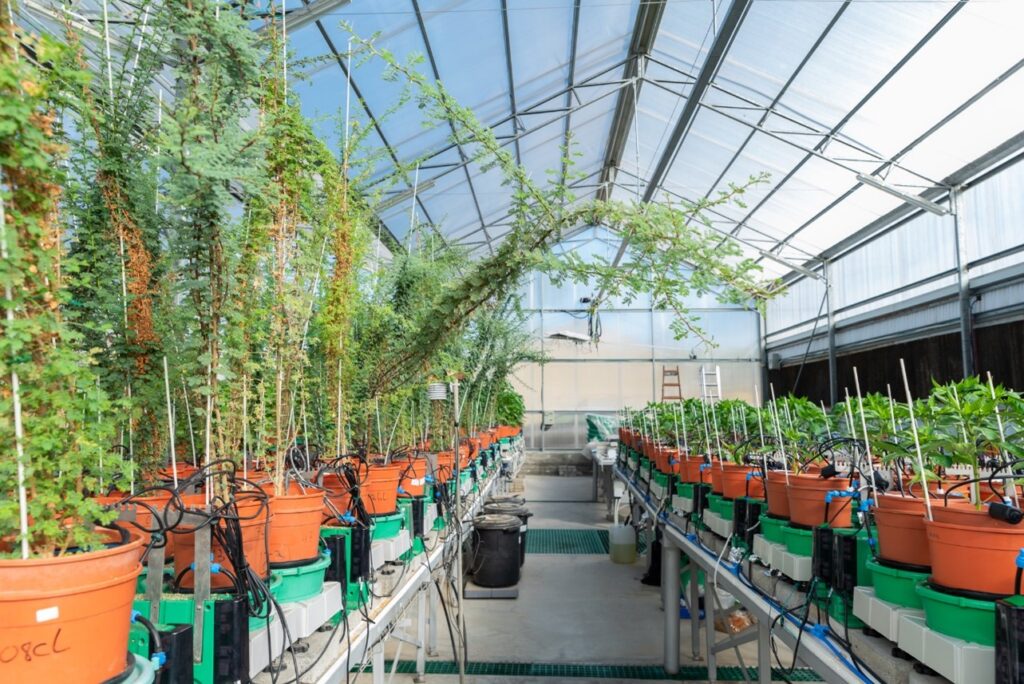
The application allows you to run real-time multiple analyses during and following the experiment, using huge amounts of real-time data that are impossible to process manually. The system controls and monitors the experiment and uploads all the data to a cloud-based application, where all data is analyzed and ready for display. The data that can be used to identify key physiological factors that contribute to plant productivity and identify ways to optimize plant growth and development.

